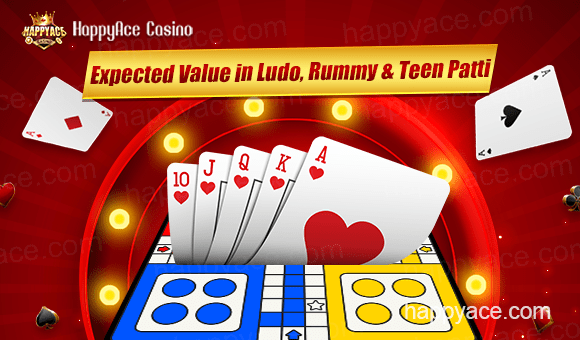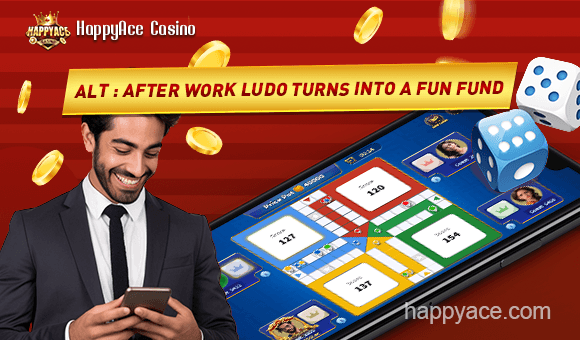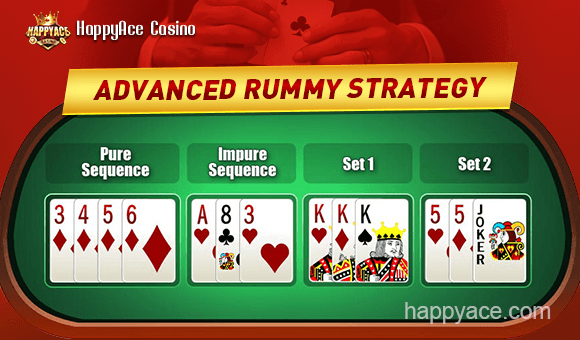In this article, we’ll explain how to use EV models in Ludo, Rummy, and Teen Patti to make smarter decisions, minimize unnecessary losses, and develop strategies that work over time.

What is Expected Value (EV)?
Expected Value is the average result of a decision if repeated many times.
The basic formula is:
EV=(Probability of Winning×Winnings)−(Probability of Losing×Loss)EV = (Probability of Winning × Winnings) - (Probability of Losing × Loss)EV=(Probability of Winning×Winnings)−(Probability of Losing×Loss)
- EV > 0 → Positive expectation, long-term profit
- EV < 0 → Negative expectation, long-term loss
1. Ludo: Using Probability to Make Smarter Moves
While Ludo is not a traditional card game, it has a clearly defined probability structure, which allows for an EV-based approach.
Dice Probabilities
Each dice number has a 1/6 chance (~16.67%).
Key probabilities to consider:
- Rolling a 6: 1/6 chance (required to enter a piece onto the board)
- Landing on an opponent: probability depends on distance, typically 1/6 or 2/6
Consider a scenario where your piece is 5 spaces away from an opponent’s piece. If you don’t move, the opponent can capture your piece if they roll a 5:
EVrisk=1/6×(−Loss)EV_{risk} = 1/6 × (-Loss)EVrisk=1/6×(−Loss)
If the loss value is 40 points (distance value), then:
EV=1/6×(−40)≈−6.67EV = 1/6 × (-40) ≈ -6.67EV=1/6×(−40)≈−6.67
Interpretation: Staying in place has negative EV. Moving or avoiding risk is statistically better.
Offensive EV
If your piece is 3 spaces away from an opponent, your EV when attempting a capture is:
EV=1/6×(+40)≈+6.67EV = 1/6 × (+40) ≈ +6.67EV=1/6×(+40)≈+6.67
- Positive EV → worth taking action
- Always base decisions on EV rather than emotions
Rummy is a skill-based game where EV is particularly useful for decision-making.
High-Value Cards Often Have Negative EV
High cards (J, Q, K, A) can be risky:
- Large point losses if not used in a set
- Harder to form sequences early
- Slower hand completion
- Potential loss: 10 + 10 = 20
- Probability of losing: 30%
Strategy: Discard high-value cards early unless they are part of an almost-complete sequence.
Sequence Completion EV
Example: You have 7♠ and 8♠, needing 6♠ or 9♠ to complete the sequence.
- Remaining cards that can complete sequence: 2 out of 40
- Probability ≈ 5%
- Gain for completing the sequence: 20 points
Even a small positive EV is statistically better than ignoring it. Always chase positive EV opportunities.
Discard Pile EV
If the discard pile has a card that completes your sequence or set:
- Positive EV is often much higher, e.g., +15 points
- Always take cards from the discard pile if it completes a combination
Teen Patti is a limited-information, skill-based betting game. EV helps decide whether to call, raise, or fold.
Hand Strength EV
- Positive EV hands: Trail (three of a kind), Pure Sequence, Sequence, Color, Pair
- Negative EV hands: High Card only
EV=(Winning Probability×Pot)−(Losing Probability×Bet)EV = (Winning Probability × Pot) - (Losing Probability × Bet)EV=(Winning Probability×Pot)−(Losing Probability×Bet)
Example:
- Hand: Pair
- Win probability: 50%
- Bet amount: 10
- Pot: 40
Positive EV → call or even raise.
High Card EV
- Win probability < 20%
- Bet: 10
- Pot: 20
Negative EV → fold immediately.
Key Takeaways: EV Improves Long-Term Performance
Expected Value is not magic—it’s a rational framework that separates casual players from professionals.
Summary of game:
- Ludo: Avoid negative EV positions and pursue positive EV captures
- Rummy: Discard high-risk cards early, complete sequences for positive EV, leverage discard pile
- Teen Patti: Use probability + pot odds to decide call/fold, focus on positive EV hands
Next Steps for Players
Track your decisions and identify which have positive or negative EV over time
Use simplified EV calculations in real-time decisions
Combine EV with bankroll management for long-term stability
By thinking in terms of Expected Value, you’re no longer gambling blindly—you’re making informed, strategic decisions every time you play Ludo, Rummy, or Teen Patti.











